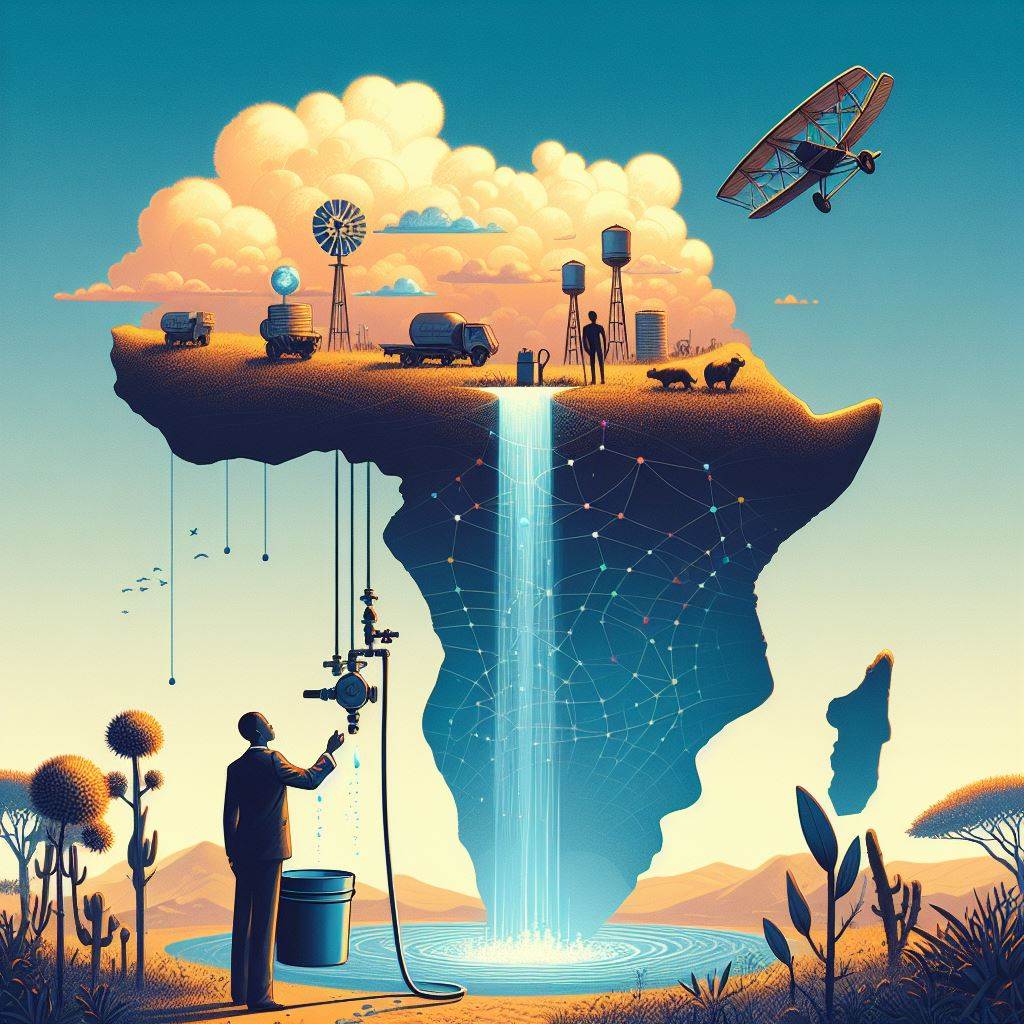People 'n' Issues
Water war looms
Water scarcity poses a significant hurdle to Africa’s growth, but innovation can drive solutions, writes Frost & Sullivan consultant HANNRO STEENEKAMP.
Water scarcity poses a significant hurdle to Africa’s growth and development, with climate change and deteriorating infrastructure intensifying the challenges. South Africa’s recent water crises, where about half of Johannesburg’s population of over 5.5-million people have been without water or experiencing shortages for weeks, serve as a dire warning. Residents often wait in long lines for government water trucks, with the supply frequently running out before reaching everyone. This crisis highlights the urgent need for solutions and the immense opportunity for businesses and innovation to make a difference.
The demand for clean water in Africa is only set to skyrocket with population growth and development projects. The fact that 387-million people in sub-Saharan Africa lacked access to essential drinking water in 2020 (up from 350-million in 2000) demonstrates the staggering scale of need. Moreover, as of October 2022, 226-million people in Eastern and Southern Africa lacked access to essential water services, and 381-million lacked basic sanitation. This issue is particularly acute in 9 key countries (Angola, DRC, Ethiopia, Kenya, Madagascar, Mozambique, Sudan, Tanzania, and Uganda), where 80% of underserved people in the region reside. These figures highlight the vast potential market for those providing water solutions. On the other hand, government limitations in tackling the multifaceted water infrastructure challenges underline the crucial role private sector investment and innovation can play.

Share of population with drinking water on premises, split between rural and urban population, by Country, 2020.
Decentralised desalination powered by solar energy is a promising solution, particularly in remote or water-stressed communities with access to coastlines or saline aquifers. This technology is becoming increasingly crucial for Africa’s water supply mix. Another key opportunity is investing in scalable water technology startups focused on advanced treatment solutions. These companies lower costs, reduce energy consumption and prioritise environmental sustainability, making them crucial in addressing water shortages. Finally, South Africa’s severe water infrastructure challenges are a stark reality. This presents a significant chance for the private sector to invest in maintenance, skills development, and partnerships with public institutions.
Companies seeking these opportunities should consider bold investments in novel water technologies like desalination and advanced water treatment. Collaborations with research institutions play a vital supporting role. Additionally, strategic private-public partnerships with local governments and communities will underpin the success of large-scale water projects, ensuring sustainability and long-term viability. Moreover, earning the support of local communities is crucial. Businesses must engage closely with stakeholders, demonstrating their commitment to addressing local needs and fostering trust.
Addressing these challenges has a vast potential impact. Success in these areas could mirror the progress in Ethiopia, where over 5,000 schools have been equipped with water, sanitation, and menstrual hygiene facilities since 2014.
However, the warnings are clear. Cape Town’s “Day Zero” crisis in 2018, or Durban’s loss of 35% of its water supply to theft, is just a glimpse of the future. South Africa’s looming water crisis, with the potential for complete water depletion by 2030, highlights the importance of urgent action.



















